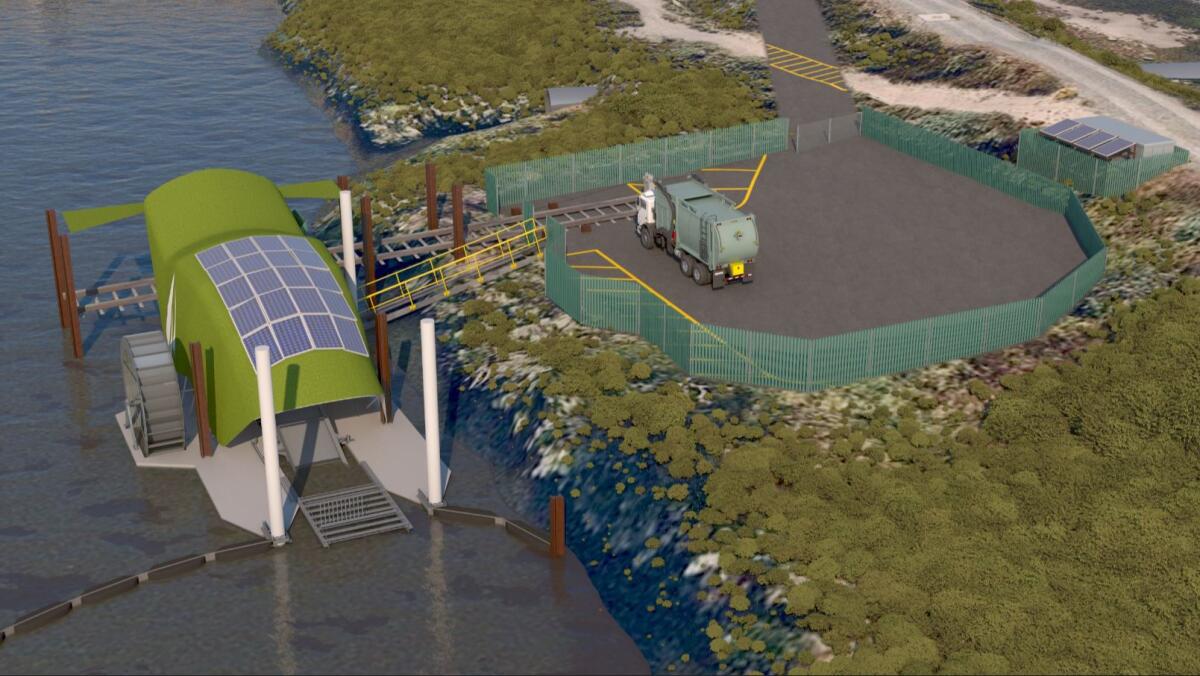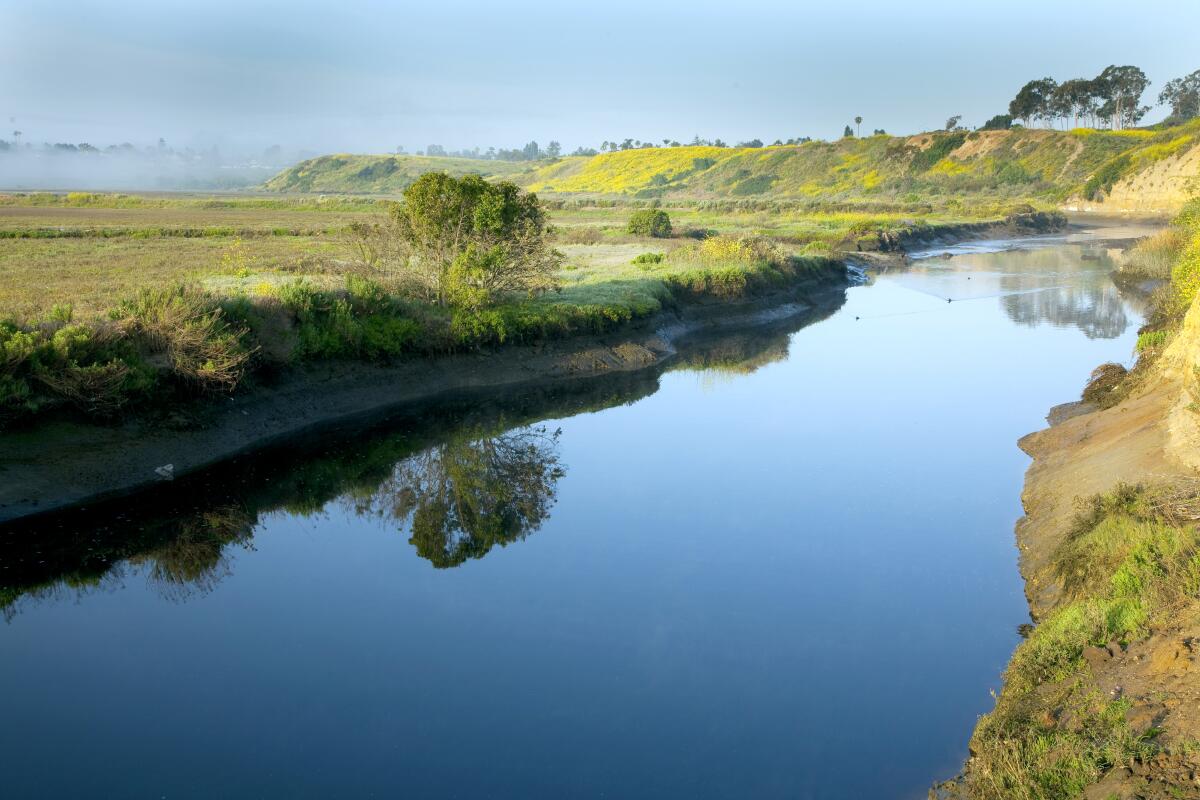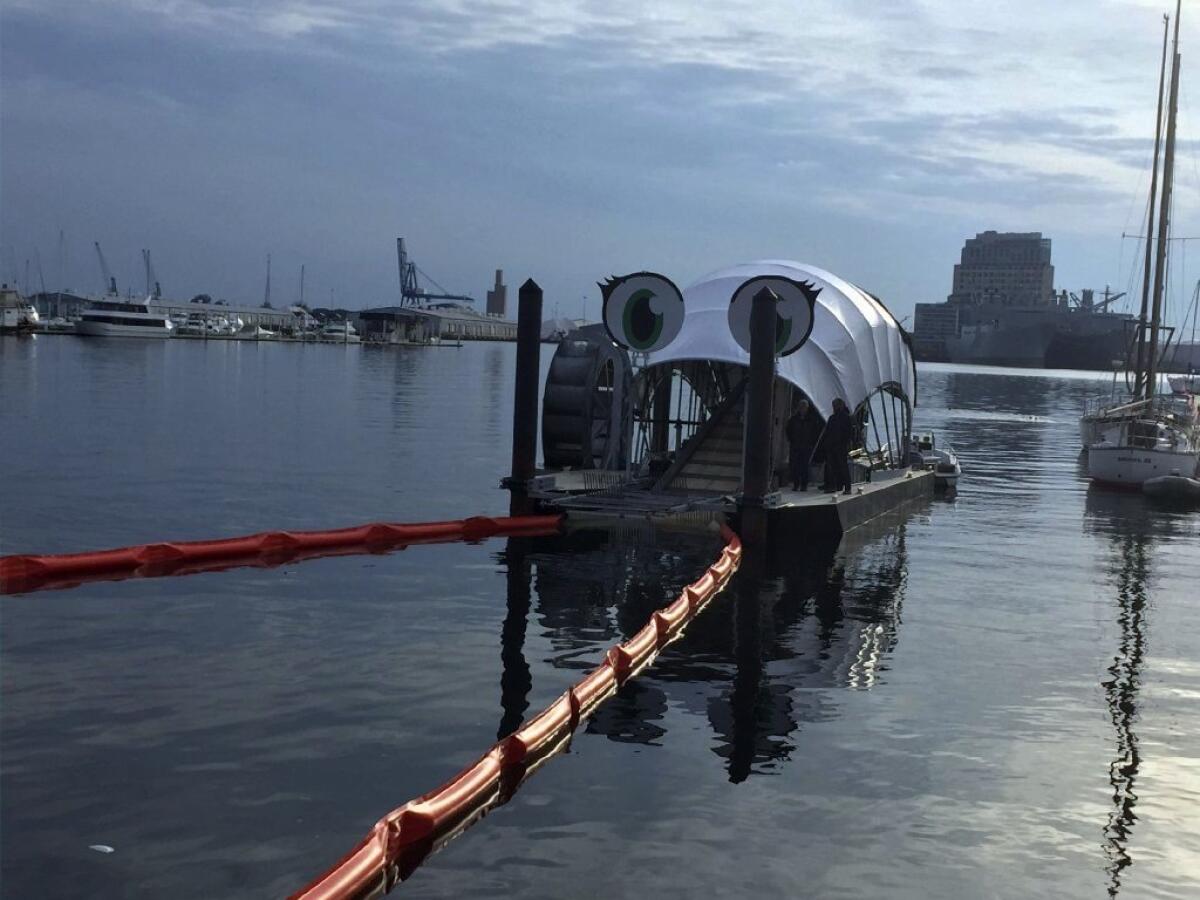Newport Beach trash interceptor nearing completion

- Share via
During a storm, garbage carelessly discarded in the street in Lake Forest or Irvine doesn’t stay there. Each year, between 100 to 300 tons of trash winds up flowing up to 15 miles downstream along San Diego Creek, ultimately polluting the Upper Newport Bay Nature Preserve.
“We’re the end of the pipe, right?” John Kappeler, a senior civil engineer in the Newport Beach Public Works Department told the Daily Pilot Tuesday.
The accumulation of that much refuse in the nature preserve alone poses a threat to the rare species calling it home. And fishing out disposable bottles, food wrappers and other items from the preserve can be just as problematic.
“We actually do more harm than good by going out and picking up that trash because we’re stepping on native plants and wildlife,” Kappeler said.

That’s why the Newport Beach City Council approved construction of a garbage interceptor at the end of San Diego Creek in July 2023. It’s a preventive waste management system similar to Baltimore’s two Mr. Trash Wheels, which use floating containment booms to direct debris toward a conveyor belt powered by a water wheel and solar panels.
The $5.5-million project is about 90% complete, with it’s conveyor belt barge and other components already positioned at the creek, Kappeler said. Crews were in the process of installing its solar panels and battery Monday. The trash wheel could be up and running as soon as late February.
“It’s taken a while, it really has,” Kappeler said. “But when you look at the hurdles and things we had to do to get there, we’re quite proud of it, to be honest.”
Unlike Mr. Trash Wheel, which uses barges to haul loads to pickup sites, Newport Beach’s interceptor operates from a fixed position and deposits garbage into dumpsters on land. That avoids having to move transport boats in and out of sensitive habitats, Kappeler said.
The interceptor’s position at the tip of a flood channel means it will need to withstand the flow of a significantly higher volume of water than its counterparts in docile Baltimore Harbor. Extra care was taken to build a system that could survive a once-in-a-lifetime storm.
“You’ve got a structure in a flood control channel 800 feet due north of Jamboree Bridge,” Kappeler said. “So we had to engineer the heck out of this thing. The last thing in the world we want is some sort of catastrophic failure and this thing heading towards the bridge.”
Once it’s operational, the interceptor might be able to catch as much as 80% of the trash that could otherwise drift into Upper Newport Bay, Kappeler said. And it might also become an educational tool that can help local classrooms and other groups visualize the impact they can have on the environment.
“Folks can see that it’s all individual wrappers and bottles and cans and things that could have been tossed somewhere miles from here,” Kappeler said. “So, with 3 million people in Orange County, you can imagine how much of a difference there could be if all made some small changes in our day-to-day lives.”

Newport Beach officials were interested in marketing the interceptor to promote conservationism and local ecotourism, Kappeler said. They have already had preliminary discussions with brands interested in sponsoring such programs.
A large portion of funding for the interceptor came from state and county grants. The California Ocean Protection Council contributed $1.68 million and the Department of Water Resources provided $1.6 million. The Orange County Transportation Authority put up another $500,000. And the company contracted to pick up Newport Beach residents’ trash, CR&R Environmental services, donated the dumpsters used by the new facility.
“The [City] Council stood up because it’s for the good of the Bay,” Kappeler said. “It’s for the good of Orange County. It’s a good project.”
All the latest on Orange County from Orange County.
Get our free TimesOC newsletter.
You may occasionally receive promotional content from the Daily Pilot.




